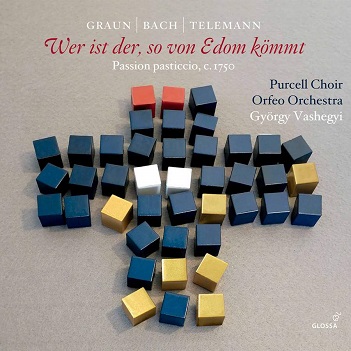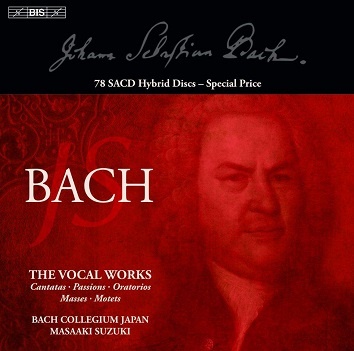
Wer Ist Der So von Edom Kommt
Orfeo Orchestra/Gyorgi Vashegyi/Purcell Choir
.. Kommt / Purcell Choir
CD
2 disc(s) 05-03-2021
Classical
In stock
Levertijd : +/- 1 tot 2 werkdagen (voorraad: 2-3 items)


| Extra info: | .. Kommt / Purcell Choir |
|---|---|
| Drager: | CD |
| Maatschappij: | Outhere |
| Label: | Glossa |
| Barcode: | 8424562240117 |
| Artikelcode: | 5A1277 |
| Suffix - prefix: | 924011 GCD |
| Orkest: | PURCELL CHOIR |
Agnes Kovacs, Peter Barany, Zoltan Megyesi, Lorant Najbauer & Purcell Choir, Orfeo Orchestra, György Vashegyi
Dirigent György Vashegyi presenteert hier het mysterieuze passie-oratorium 'Wer ist der, so von Edom kömmt." Er is veel mysterieus aan deze pastiche met muziek van Carl Heinrich Graun, Georg Philipp Telemann en Johann Sebastian Bach. Grauns passiecantate "Ein Lämmlein geht und trägt die Schuld" vormt de basis voor 31 van de 42 nummers, twee nummers komen uit Telemanns cantate voor Palmzondag en drie nummers zijn duidelijk aan Bach te linken, waaronder enkele tot nu toe onbekende koraalgedeelten. Zes nummers zijn van een anonieme componist, maar hij schreef enkele van de meest indrukwekkende passages in het werk. Een andere bijzonderheid is dat het lijdensverhaal wordt verteld door middel van koralen, waarvan de dichtheid van de compositie, met haar unieke dramatische harmonieën en de schikking van de stemmen, van zo'n uitzonderlijke kwaliteit zijn dat niemand anders dan Bach zelf als de auteur zou kunnen worden beschouwd. Niet weinig auteurs vermoeden daarom dat dit de vijfde van de vijf "Passies" is die in de necrologie worden genoemd.
The conductor Gyorgy Vashegyi and his ensembles, the Orfeo Orchestra and the Purcell Choir, are fluent in various fields of baroque and classical music, with a particular predilection for French baroque opera. However, one of their favourite lines of work is Lutheran sacred music, and a good example of this is this beautiful work, Wer ist der, so von Edom kommt (Who is this that comes from Edom?), a period pasticcio with pieces by various composers. Graun (a composer at the court of Frederick II who was greatly admired by his contemporary colleagues), rubs shoulders here with Telemann and Johann Sebastian Bach, as well as with a mysterious unknown, who wrote several of the most impressive passages in the work. In fact, this is a Passion Oratorio, a reflection on the events related to the martyrdom of Christ based on freely chosen texts without following a precise Gospel and without summoning the usual characters of the drama into an imaginary setting. The originality of this patchwork also lies in the distribution of the text where contrary to many passions of the time the events of the last days of Jesus life are told by chorales that float in the meditative atmosphere of the recitatives, arias and choruses. These chorales are especially impressive in the second part: the density of the writing, the unique dramatic harmonies, the arrangement of the voices are of such an exceptional quality that their author could definitely be Johann Sebastian Bach himself... whom the author of the essay included in the libretto, Gergely Fazekas, also points to as the possible compiler of this masterpiece.
Bach, J S:
Die Seele ruht in Jesu Händen from Cantata 127
So heb ich meine Augen sehnlich auf, BWV1088
Graun, C H:
Wer ist der so von Edom kömmt, Ein Lämmlein geht und trägt die Schuld, GraunWV B:VII:4
Telemann:
Wer ist der so von Edom kömmt, Wer ist der so von Sodom kommt, TWV 1:1585

















